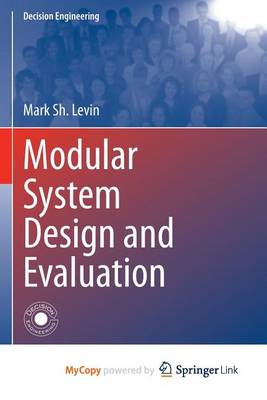Decision Engineering
2 total works
Composite decisions are decisions consisting of interconnected parts (subdecisions) and they correspond to a composite (composable, modular, decomposable) system. The material will be of interest to scientists (e.g., mathematicians, computer scientists, economists, social engineers,etc.). The book can be used as a text for courses (for example: systems engineering, system design, life cycle engineering, engineering design, combinatorial synthesis) at the level of undergraduate (a compressed version), graduate/PhD levels and for continuing education.

